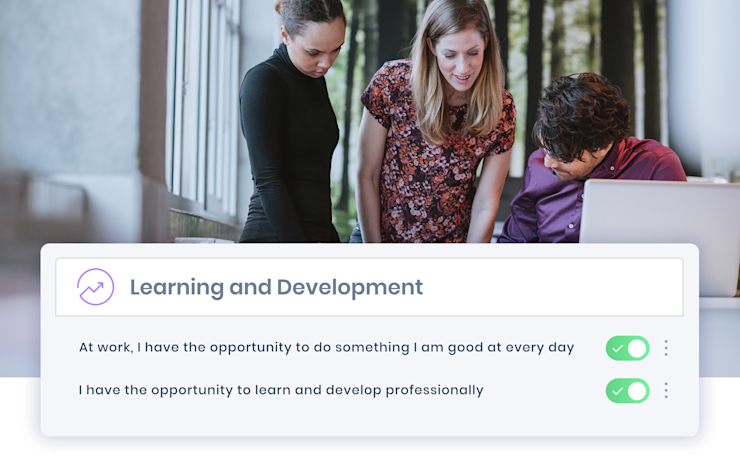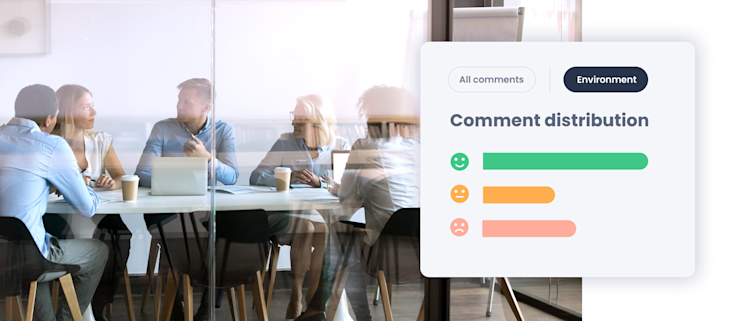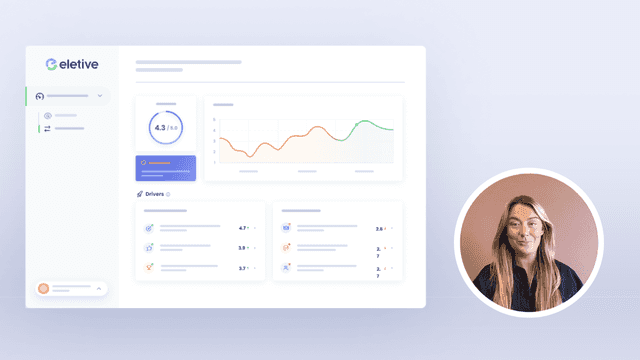Picture this: a workforce that is constantly growing, evolving, and achieving more than you ever thought possible. Are you ready to unlock the secret to unparalleled success within your organisation?
Join us as we explore the components, importance, and benefits of employee development, and discover how you can create a thriving workplace culture that attracts top talent and fosters innovation. Let us introduce you to the transformative power of employee development.
What is employee development?
Employee development is a continuous attempt to improve an individual's capabilities, understanding, and aptitudes in order to enable them to attain their highest potential within a company.
This is usually done through various development opportunities such as training, mentorship, job rotation and other learning activities.
The main goal of employee development is not only to enhance individual performance, but also contribute towards overall organisational success.
Why is employee development important?
Employee development is a key factor in achieving organisational objectives, as it not only bolsters employees' abilities and understanding but also furthers their individual growth, contentment at work, job fulfilment, and professional progress.
Investing in employee development should be a major concern for HR managers due to its potential advantages.

Benefits of employee development
Increased productivity: A well-trained workforce is more efficient, resulting in higher levels of output and overall performance. Studies demonstrate that organisations with capable instructional courses have a 24% bigger benefit edge than those without.
Better retention rates: Better employee retention: Employees who feel valued through professional growth opportunities are less likely to leave their jobs. In fact, according to a Gallup study, 87% of millennials consider career growth and development opportunities as important factors when choosing an employer.
Talent attraction: Companies known for offering comprehensive employee development programs often attract top talent in the market. Job seekers view these organisations as ideal places to grow professionally and build successful careers.
Fostering innovation: Encouraging employees to learn new skills or explore different areas within the organisation promotes creativity and innovation. This leads to fresh ideas that can drive business growth.
Cultivating future leaders: Developing internal talent enables organisations to build a strong pipeline of potential leaders who understand the company culture and values. This reduces recruitment costs while ensuring continuity in leadership roles.
Improving employee satisfaction: Engaging in personal growth activities contributes significantly towards job satisfaction, leading to happier employees who perform better at work.
Strategies for employee development
Today, it is considered strange if a company doesn’t invest in employee growth. Especially considering approximately 70% of employees would consider leaving their current job for an organisation that prioritises employee development and learning (according to Lorman).
Fostering a culture of continuous learning and professional growth is now essential. Companies who do that will have an easier time attracting top talent while retaining existing staff members.
But to ensure the success of any employee development program, it is essential to have a comprehensive understanding of strategies for employee development.
Skills Enhancement: Providing employees with training and resources to improve their technical or soft skills that are essential for their current role or future career growth.
Career Growth Opportunities: Offering clear pathways for advancement within the organisation by setting achievable goals and providing support in achieving those objectives.
Mentorship Programs: Connecting experienced professionals with less-experienced employees who can benefit from guidance and advice on navigating workplace challenges.
Educational Assistance: Encouraging employees to pursue further education relevant to their field by offering financial assistance or flexible work schedules that accommodate study commitments.
Employee development program: Establish an employee development program that provides opportunities for employees to learn new skills and grow within the company.
Career development plans: Utilise employee development plan examples, templates, and resources to create personalised career paths for each team member.
The importance of training for employee development: Invest in ongoing training initiatives as they play a significant role in enhancing employees' skill sets and overall performance. For example, consider offering workshops or online courses on relevant topics such as leadership or communication skills.
By understanding the importance of employee development, HR managers can ensure their employees are engaged and performing at their best.
That's why… In addition to these strategies, it's essential to monitor progress using tools like Eletive, which can help you measure your team's engagement levels while increasing overall performance.
By leveraging the data-driven insights from our platform, HR managers can make informed decisions about which types of training will be most beneficial based on individual needs while ensuring alignment with organisational goals.

The employee development process
Understanding the employee development process is crucial for HR managers to create effective programs that cater to their workforce's needs.
The process typically involves a few key steps, which we will outline below.
Step 1: Assessing needs and goals
To begin with, it's essential to assess both the company's goals and employees' individual objectives.
This can be done through surveys, appraisals, or 1-on-1 personal conversations to pinpoint areas where growth is needed and develop an achievable plan. Identifying areas where improvement is needed helps tailor an actionable plan for growth.

Step 2: Avoid these common mistakes
Having an effective staff development plan in place is fundamental for your business to thrive. When implementing employee development programs, employers should be aware of potential pitfalls to ensure a successful outcome.
Lack of clear goals
To avoid this issue, set specific objectives that align with your company's overall strategy and consider each individual's unique strengths and areas for improvement.
Inadequate opportunities for development
Failing to provide employees with adequate opportunities for growth can hinder their progress. Ensure you offer various opportunities for development, such as training courses, mentorship programs, or job rotation assignments.
Neglecting employee input
A successful employee development program should be tailored to meet the needs of each individual. Ignoring employees' input on their preferred learning styles or career aspirations may lead to disengagement or even turnover.
Encourage open communication between managers and staff members about their preferences regarding professional growth.
With Eletive’s performance management features, you can ensure that your employee development program is successful and beneficial for both the organisation and its employees.

Step 3: Choose appropriate methods
Different employee development methods are available depending on your organisation's specific requirements.
To maximise the effectiveness of any HR strategy, implementing the right strategies for employee development is essential to ensure engagement, productivity and motivation. By understanding how to properly strategize for employee development, managers will be able to maximise their team's potential and create an environment where everyone can thrive.
Some popular options include:
Mentoring programs - pairing experienced staff members with newer employees for guidance and support.
Training programs - offering courses in technical skills, soft skills, or leadership roles as needed.
Career planning sessions - helping employees map out their desired career paths within the company.

Step 4: Implementing programs and monitoring progress
Create a robust employee development program by implementing selected methods while keeping track of progress through regular check-ins or evaluations.
Adjustments may need to be made along the way based on feedback from participants or changing business goals.

Examples of successful employee development programs
In the current corporate world, firms are beginning to understand how essential it is to invest in their personnel's growth and development. Here are some examples of organisations that have implemented successful employee development programs:
Google: Known for its innovative approach to talent management, Google offers a comprehensive employee development program called "Grow with Google." This initiative provides various resources such as online courses, workshops, and coaching sessions to help employees develop new skills and advance their careers.
IBM: IBM has long been a pioneer in the field of employee training and development. Its award-winning Corporate Service Corps program sends high-potential employees on international assignments where they work on projects aimed at solving social challenges while developing leadership skills.
Salesforce: Salesforce is another company that places great emphasis on employee development. Their Trailhead platform offers personalised learning paths tailored to each individual's career goals, enabling them to acquire valuable skills through interactive content and hands-on challenges.
PwC: PwC's commitment to continuous learning is evident through its extensive range of professional education offerings. The firm invests heavily in creating customised training programs designed around specific roles within the organisation - an example of effective employee development in HRM.
The success stories above demonstrate how implementing well-designed employee development programs can lead to increased employee engagement, improved performance, and ultimately business growth.
As an HR leader, it's important to create a carefully thought-out employee development strategy that aligns with the company's goals and supports the growth of adaptable employees.
Our client Rutgers was able to implement an employee development strategy with the help of Eletive. Read the full case study here.
Conclusion
Employee development is a crucial aspect of any successful business.
By providing carefully thought-out employee development strategies and programs, companies can improve employee satisfaction, engagement, retention rates, and boost productivity while achieving their business goals.
The process involves identifying areas for improvement in the current workforce and implementing actionable plans to provide growth opportunities that align with both personal and professional goals.
You can avoid common employee development mistakes by conducting surveys with Eletive.
So you can identify what your employees want before implementing mandatory training or mentoring programs.
Our robust employee development program provides a competitive advantage by giving HR departments access to a branded survey interface. Employees will love giving you their feedback because everything is secure and anonymous.
Contact sales today for a free, no obligation demo.
FAQs
What are the four approaches to employee development?
The four main approaches to employee development include: 1) Formal education, such as workshops, seminars, and courses; 2) Coaching from experienced professionals or managers; 3) Job rotation, which exposes employees to different roles within the organisation; and 4) Self-directed learning, where employees take charge of their own professional growth through online resources or personal projects.
What are the benefits of employee development in the workplace?
Employee development offers numerous benefits in the workplace, including increased job satisfaction, improved performance and productivity, higher retention rates, better adaptability to change, enhanced innovation and creativity, stronger succession planning for leadership positions, and a more attractive employer brand. These factors contribute significantly to an organisation's overall success.
How do you write an employee development plan?
To write an effective employee development plan: 1) Identify specific goals aligned with both individual aspirations and organisational objectives; 2) Assess current skills and knowledge gaps that need addressing; 3) Outline actionable steps for achieving these goals (e.g., training programs or mentoring); 4) Set realistic timelines for completion; and finally, 5) Monitor progress regularly and adjust the plan as needed to ensure continuous growth.

























